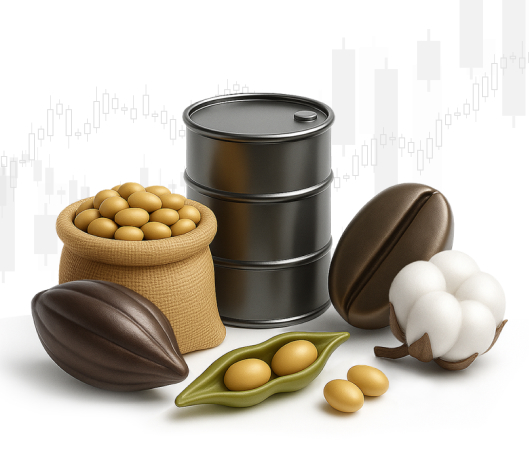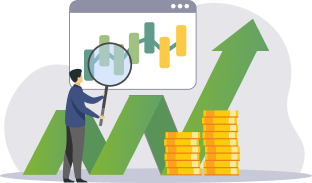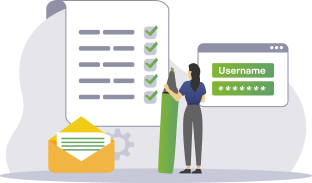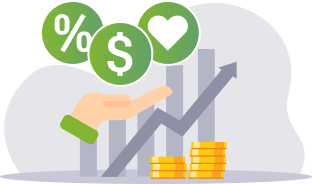- Trading
- Markets
- Futures
Futures CFD Trading
Commodity Futures Trading is a popular way to speculate on the price of raw materials like gold, oil, natural gas, wheat, and coffee.
Instead of buying or storing the actual commodity, traders enter into contracts that predict the future price of these resources.
With CFDs you can trade commodity futures more flexibly, without worrying about expiration dates or physical delivery. Commodity futures trading through CFDs is a straightforward way to access the markets.

Factors Influencing Commodity Futures Prices
Futures CFD Instruments allow investing in price dynamics of different assets through liquid futures.
The date of the beginning of trading, end of trading and the current status is provided per each CFD. Three status values are available:
- Trading - an opportunity to make deals and set orders without any limitations (during the trading sessions).
- Only closure – Only closure of earlier opened positions (generally is set two trading days before the end of trading).
- Closed - trading has not opened yet or it has alreaded eneded. The Future CFD is removed from the list of instruments 42 days after the date of end of trading.
Trading such a CFD is performed during the trading sessions of the futures. The date of end of trading of each CFD is set on the basis of the liquidity of the future and the beginning of delivery period before the expiration of the future. The tickers of the Futures CFDs begin with “#F-“.
Looking for a Trading Instrument?
Please, choose the account type on MetaTrader 4 and MetaTrader 5
* For # F-BRN ... and # F-CL ... instruments with a total volume of open positions of 10 lots or more, the maximum account leverage may be reduced to 1:4; the maximum allowable volume of open positions is 75 lots.
Commodity Futures Online Trading
With digital platforms, trading online commodity futures is now accessible to almost anyone. You don’t need to go through traditional futures exchanges or deal with complicated contract terms. Instead, CFDs let you trade on price changes in commodity futures contracts directly.
For example, if crude oil futures are trading at $80 per barrel and you believe prices will rise, you can open a long CFD position. If the price climbs to $85, you profit from the difference. If you expect prices to fall, you can take a short position and potentially benefit from the decline.
Trading online commodity futures is useful for individuals who want exposure to global commodity markets without the hassle of handling real assets.
What is Commodity Futures Trading?
At its core, online commodity trading with futures is about buying or selling agreements tied to the future price of natural resources. Traditionally, futures contracts required traders to buy or sell a set amount of a commodity at a fixed price on a specific date. With CFDs, you don’t have to worry about these technical details, you simply speculate on whether the price of the futures contract will rise or fall.
There are two main types of commodities you can trade:
- Hard commodities – Natural resources that are mined or extracted, such as gold, silver, crude oil, and natural gas.
- Soft commodities– Agricultural products and livestock, such as coffee, wheat, corn, and cotton.
For example, gold futures are at $2,400 per ounce. If you expect economic event to push prices higher, you could buy a CFD on gold futures. If the market moves up to $2,450, you profit from the difference. If prices drop, you take a loss.

How to Start Commodity Futures Online Trading?
Getting started with commodity futures CFD trading is simple if you follow a step-by-step process.
- Choose a trading platform – Open an account with a broker that offers CFDs on commodity futures.
- Pick a commodity – Decide which market interests you: gold, silver, crude oil, natural gas, or agricultural products.
- Decide on direction – Go long if you think prices will rise or short, if you expect them to fall. Follow the price trend, volume, conduct you own technical analysis.
- Set leverage and position size – CFDs allow you to trade with leverage, which increases profits. Use margin calculator, it can help you calculate how much margin you need to open a trading position.
- Apply risk management tools – Use stop-loss and take-profit orders to control your exposure. Going in CFD trading without these tools is a suicide.
- Monitor the market – Keep an eye on global events, economic reports, and supply and demand trends that affect commodities.
- Close your position – Take your profit or cut your loss depending on how the market moves.
Example: Suppose natural gas futures are priced at $2.50 per unit. If you expect colder weather to increase demand, you buy. If the price rises to $2.80, you profit. If it falls to $2.30, you lose.

Key Benefits of Commodity Futures CFD Trading
Trading commodity futures with CFDs has many advantages compared to traditional futures contracts.
- No expiration dates – Unlike traditional futures, CFDs often don’t expire, so you can hold positions as long as you like.
- Trade rising or falling prices – You can profit in both bullish and bearish markets.
- Leverage opportunities – Control larger positions with a smaller initial margin, remember, leverage increases risk.
- Lower entry barrier – You don’t need to buy physical commodities or manage storage and delivery.
- 24/5 market access – Trade global commodity markets from anywhere with an internet connection.
- Diversification – Add commodities to your trading portfolio to reduce reliance on stock or currency markets.
For instance, if you already invest in equities, trading gold or oil through CFDs can provide a hedge during periods of market uncertainty.

More Markets to Consider
Commodity futures trading works by speculating on the future price of resources like gold, oil, or wheat. Traditionally, futures contracts required buying or selling the actual commodity at a set price on a future date. With CFDs, you don’t have to own the commodity, simply trade on price movements. For example, if oil futures are $80 and you expect them to rise, you can buy a CFD. If the price climbs to $85, you profit from the difference.

